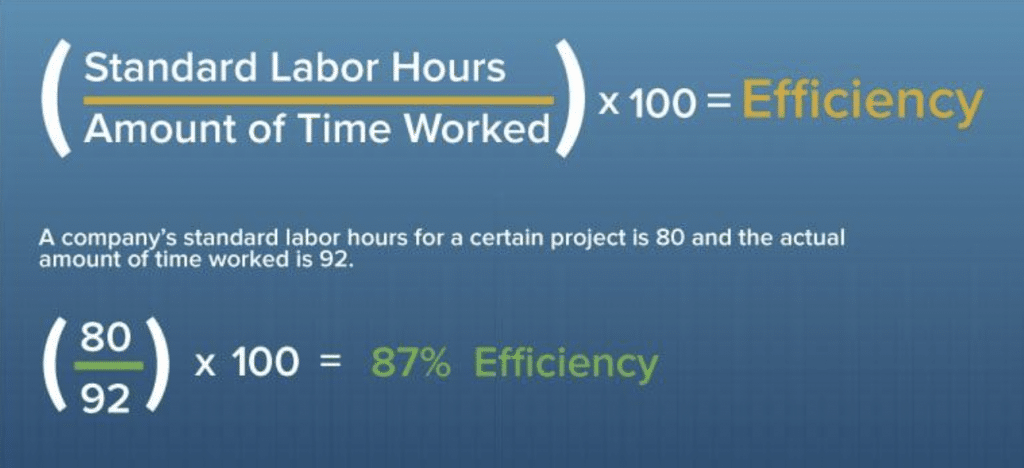Productivity Vs. Efficiency: Which Is More Important and Why?

Most countries are still feeling the economic consequences of the systemic supply chain disruptions that have become endemic to economies everywhere. With production and shipping costs set to remain high for the foreseeable future, businesses large and small need to evaluate their own processes to understand the different roles of productivity versus efficiency in the workplace.
“Supply chain problems will get worse before they get better,” says Moody Analytics CEO Tim Uy. Demand is up in most sectors as economies reopen but many businesses still struggle with production issues and cannot yet scale up their operations to match demand. Automotive manufacturer Toyota announced recently that – despite record-setting demand – they will cut global production by 40% in the coming months while the company tries to resolve persistent part shortages. Similar plans have become increasingly common across the manufacturing world.
As margins remain tight and many businesses need to do more with less, a better understanding of how to achieve high performance – both for individuals and organizations in the office and at home – is critical to success. Learn what productivity and efficiency are and how they differ in business operations.
Key Takeaways:
- Productivity measures the quantity of work done by an individual or organization in a fixed period of time.
- Efficiency measures the quality of work either in the degree to which it is error-free or in the value it generates.
- Efficiency is often a better determinant of value than productivity.
READ ALSO:
10 Best Document Management Software for Small Businesses in 2024
10 Best Document Scanning Software for Windows 10 Users in 2024
What is Productivity?
Whether it’s a matter of cars on an assembly line or lines of code in a program, productivity in business contexts measures the quantity of output. It is simply a measure of how much work is accomplished in a given amount of time. Work or output in this case can refer to both physical units of production and abstract measures such as sales, contracts, or profits.

You can calculate productivity in a given scenario by dividing the total output by total input. For example, if a factory worker produces 800 units in an eight-hour shift, that worker’s productivity would be calculated:
800/8 = 100 per hour
Similarly, you could calculate productivity for the factory as a whole per hour per worker. With a factory average, you could identify underperforming and high-performing workers.
The equation to calculate productivity remains the same in all different industries and kinds of business. You only need to identify a meaningful unit of work by which to measure output. In manufacturing contexts, this is relatively simple. In other fields where production is intangible, identifying a unit of work involves isolating tasks and activities that generate value.
- Sales: Employers can measure productivity in sales by metrics such as total sales volume, accounts opened, calls made, or leads followed.
- Services: Service productivity may consist of task measurements such as the number of customers served, cases or issues resolved, and customer satisfaction or feedback.
In each instance, productivity is a purely quantitative measure and does not yield any insight into work quality.
What is Efficiency?
Efficiency in business measures the quality of work. It indicates how often things are done right. In a given quantity of work or output, the percentage of the whole that meets quality standards determines how efficiently the work was performed. Like productivity, efficiency applies to both physical products and tasks or processes.
Unlike productivity, businesses calculate efficiency in two ways, with the inclusion of a variable for time determining the difference. Without including time, calculating efficiency only requires comparing the number of successfully performed tasks to a given total. For example, a factory that produces nine standard units for every ten that roll off the line has an efficiency rate of 90%. A programmer who writes 800 working lines of code in a total of 1000 would rate 80%.
On its own, however, a static efficiency rating isn’t very useful or informative. For example, an efficiency rating of 100% for an employee or a process wouldn’t mean much if the work was being accomplished in weeks rather than days. For this reason, businesses more commonly calculate efficiency as a rate for a fixed period of time. Accountants and statisticians call this time period standard labor hours.
Standard labor hours specify how long a task should take. For example, a roofing company would typically define labor hours by square feet so that they could make accurate estimates for jobs. Other fields require more complicated metrics. An application developer would make a list of the desired functions in an application and tally separate labor hours for each. In both cases, determining labor hours depends on tracking the average amount of time specific tasks take in your business.

To calculate efficiency over time, you divide the number of standard labor hours by the time a task consumed and multiply by 100. For example, if a project had 80 allotted labor hours but took 92 to complete, the project would have an efficiency rating of 87%. If the same task were completed in fewer than 80 hours, the project would have a rating greater than 100. Tasks that consistently deliver 100+ efficiencies ratings may indicate a need to reevaluate the assigned standard labor hours.
The Importance of Productivity and Efficiency
Compared to productivity, measuring efficiency in people and processes will tend to yield more actionable insights. Businesses need to track productivity to establish that baseline expectations are being met and to calibrate the standard labor hours assigned to tasks. Nevertheless, rising productivity does not necessarily correlate with rising profits.
Faster manufacturing processes may introduce higher rates of error. Employees who outproduce their peers may consume more time and resources if their work requires a significantly greater amount of revision or correction. Above a threshold of inefficiency, an increase in productivity can result in a net loss rather than a gain.
Increases in efficiency, on the other hand, reliably indicate improvement. There are no circumstances in which higher rates of performance to standards or completing tasks in less time do not deliver at the bottom line. Informed businesses will pay attention to both productivity and efficiency but will also view changes in productivity in a larger context.
Document Management Solutions with FileCenter
Organization is critical to maintaining a fast and efficient workflow. FileCenter’s document management software delivers a one-stop solution for organizing your business documents in an intuitive, cloud-ready format.
To schedule a demo or download a free trial, visit FileCenter today.


